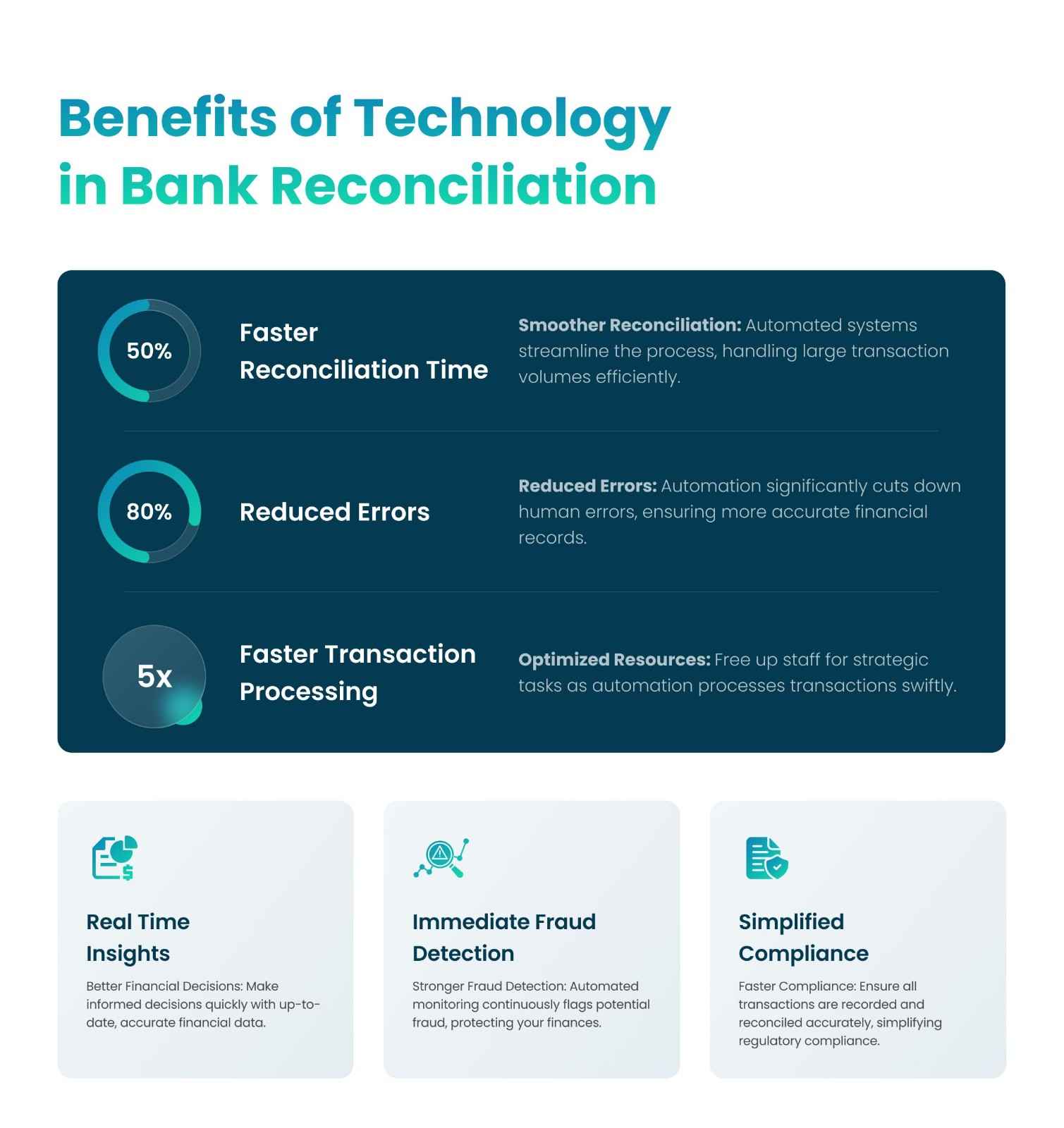Data Preparation
A Guide to Data Harmony and Efficient Bank Reconciliation
Learn how to streamline bank reconciliation processes and ensure financial accuracy with actionable tips and strategies.

Amrit Mohanty
May 28, 2024 (Last Updated: Nov 13, 2025)

When it comes to the financial world the numbers reign supreme and data harmony is the key to success. Whether you're a seasoned accountant or a small business owner, bank reconciliation is a vital process to ensure financial accuracy and integrity. In this comprehensive blog post, we'll delve into the intricacies of bank reconciliation, providing you with actionable tips and strategies to streamline your workflow and achieve data harmony.
Before we dive into the nitty-gritty, let's start with the basics. What exactly is bank reconciliation? At its core, bank reconciliation is the process of comparing your company's financial records with those of your bank to ensure they match. This involves reconciling discrepancies between your records and the bank statement, such as outstanding checks, deposits in transit, and bank fees.
Building Blocks of Financial Integrity: Establishing a Robust Foundation for Efficient Bank Reconciliation
At the heart of efficient bank reconciliation lies the establishment of a robust foundation, built upon accurate and up-to-date financial records. It's imperative to meticulously track every financial transaction, encompassing deposits, withdrawals, and transfers, utilizing a trustworthy accounting software or a meticulously crafted spreadsheet. Moreover, regular reconciliation of accounts is paramount, ideally performed on a monthly basis. This routine practice ensures that your records align with the bank's records. Additionally, it functions as an early warning system that makes it possible to quickly identify and address any differences that might surface. By establishing these essential foundational pieces, you create the conditions for a smooth reconciliation process that promotes financial integrity and trust in the financial management of your company.
Uncovering Discrepancies: A Closer Look at Bank Reconciliation Challenges
Bank reconciliation can be challenging for businesses due to various reasons, including discrepancies between bank statements and internal accounting records, timing differences, errors, and fraud. Here are some common challenges along with statistics to illustrate their impact:
Manual reconciliation Errors
Errors frequently occur in manual reconciliation processes, especially as the volume of data grows. With increased data, the likelihood of errors also rises, disrupting the reconciliation process and elevating operational risk for organizations.
Timing Differences:
Transactions recorded in the company's books may not always match the timing of transactions recorded by the bank and this can lead to discrepancies in balances. Timing differences are cited as a primary cause of reconciliation delays by finance professionals across.
Transaction Errors:
Human errors in transaction recording can occur on both the company's and the bank's sides, further complicating reconciliation. EuSpRIG notes that over 90% of spreadsheets contain errors, often undetected due to insufficient testing.
Data Expansion
As businesses digitize, data generation skyrockets. IDC forecasts global data to hit 180 zettabytes by 2025, up from 10 zettabytes today. With data dispersed and diverse, traditional manual or spreadsheet reconciliation methods struggle to keep pace.
Fraudulent Activities:
Fraudulent activities such as unauthorized transactions or forged checks can significantly impact bank reconciliation. The Association of Certified Fraud Examiners (ACFE) reports that 5% of occupational fraud cases involve manipulation of bank reconciliations.

Fortifying Financial Integrity: Implementing Checks and Balances for Data Harmony
Implementing checks and balances within your organization is paramount to fortifying financial integrity and ensuring data harmony. By segregating duties among employees, you distribute responsibilities and create a system of accountability that mitigates the risk of errors or fraudulent activity going unnoticed. Conducting regular audits serves as a proactive measure to identify and rectify discrepancies before they escalate, providing assurance that your financial records accurately reflect the true state of your business.
Moreover, implementing internal controls establishes clear guidelines and procedures for handling financial transactions, safeguarding against unauthorized access and potential misuse of funds. Consider instituting dual authorization for significant transactions, where two or more individuals must sign off on a transaction before it's executed, to add an extra layer of scrutiny and prevent potential fraud. Additionally, with access of sensitive financial information to only authorized personnel minimizes the risk of data breaches and ensures confidentiality. By adopting these measures, you create a robust framework that promotes transparency, accountability, and trust, laying the groundwork for sustainable growth and success.
Harnessing the Power of Technology for Seamless Bank Reconciliation
Leveraging cutting-edge technology can revolutionize the bank reconciliation process, ensuring seamless and efficient operations for businesses. By embracing automated solutions and digital platforms, organizations can streamline reconciliation tasks, minimize errors, and enhance overall financial management. With advanced software and tools, discrepancies can be quickly identified and resolved, saving time and resources. Real-time access to financial data allows for better decision-making and forecasting, empowering businesses to stay agile in a dynamic market. Additionally, automated reconciliation processes reduce the risk of fraud and improve compliance with regulatory requirements. In summary, harnessing technology offers the following benefits:
- Streamlined reconciliation tasks
- Minimized errors and discrepancies
- Efficient resource utilization
- Enhanced financial management and decision-making
- Improved fraud detection and regulatory compliance
Turbocharge Your Reconciliation: Strategies for Streamlining the Process
Now that you've laid the groundwork for efficient bank reconciliation, it's time to kick it up a notch and turbocharge your process. Begin by establishing a systematic approach to organizing your financial records. Categorize transactions meticulously and maintain detailed adjustment records to ensure nothing slips through the cracks. Then, harness the power of automation to your advantage. Utilize cutting-edge accounting software or specialized reconciliation tools to automate repetitive tasks, such as importing bank statements and matching transactions. By embracing automation, not only do you save valuable time, but you also mitigate the risk of human error, paving the way for a smoother, more accurate reconciliation process.
Evolution of Financial Accuracy: Embracing Continuous Improvement in Bank Reconciliation
Achieving data harmony in bank reconciliation is not a one-time task but a dynamic process that demands perpetual refinement and adaptation. By cultivating a culture of continuous improvement within your organization, you pave the way for sustained success and excellence in financial management. Regularly review and refine your reconciliation process, seeking feedback from stakeholders and incorporating industry best practices to stay ahead of the curve. Embrace a mindset of perpetual learning and innovation, leveraging technology and embracing new methodologies to enhance efficiency and accuracy. Through this commitment to continuous improvement, you'll not only master the art of bank reconciliation but also drive positive change and innovation in your organization's financial operations, ensuring a solid foundation for future growth and success.
Summary
And there you have it–a comprehensive guide to efficient bank reconciliation. By mastering the art of matching transactions, embracing the right tools, and staying diligent in your record-keeping, you can ensure data harmony and keep your finances in tip-top shape. When you're able to reconcile your accounts smoothly, you're not just ticking off a task on your financial to-do list; you're gaining invaluable insights into your financial health. You're spotting trends, identifying potential issues, and making informed decisions about your money. Plus, there's a certain satisfaction that comes with knowing that your balance sheets are in order. So go forth, fellow analysts, equipped with the requisite knowledge and resources to master bank reconciliation. May your reconciliations be efficient, your balance sheets harmonized, and your financial prospects promising. Furthermore, remember that in times of difficulty or impasse, a community of finance aficionados stands prepared to offer assistance.

